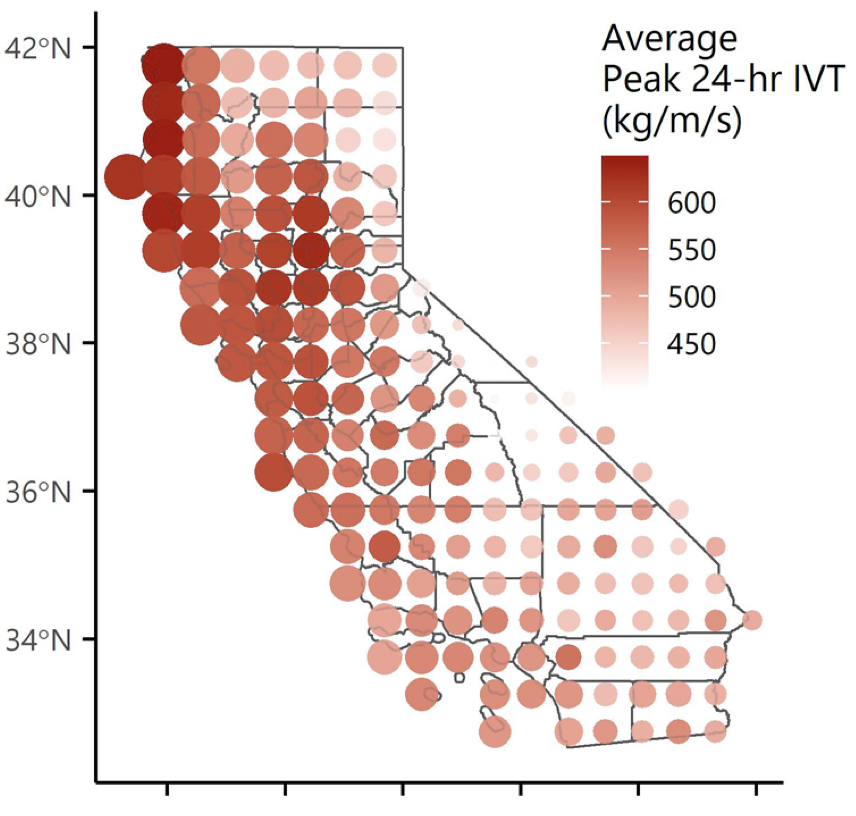
SERAFIN – Atmospheric River Sequences as Indicators of Hydrologic Hazard in Historical Reanalysis and GFDL SPEAR Future Climate Projections
C. Bowers, K. A. Serafin, K.-C. Tseng, J. W. Baker
Article first published online: 28 November 2023
DOI: https://doi.org/10.1029/2023EF003536
ABSTRACT: When multiple atmospheric rivers (ARs) occur in rapid succession, the combined effect on the hydrologic system can lead to more flooding and damage than would be expected from the individual events. This temporally compounding risk is a source of growing concern for water managers in California. We present a novel moving average-based definition of AR “sequences” that identifies the time periods of elevated hydrologic hazard that occur during and after consecutive AR events. This marks the first quantitative evaluation of when temporal compounding is contributing to AR flood risk. We also assess projected changes in sequence frequency, intensity, and duration in California using the Geophysical Fluid Dynamics Laboratory Seamless System for Prediction and EArth system Research (GFDL SPEAR) global coupled model. Sequence frequency increases over time and is fairly uniform across the state under both intermediate (SSP2–4.5) and very high (SSP5–8.5) emissions scenarios, with the largest changes occurring by the end of the century (+0.72 sequences/year in SSP2–4.5, +1.13 sequences/year in SSP5–8.5). Sequence intensity and duration both see increases in the medians and extreme values of their respective distributions relative to the historical baselines. In particular, “super-sequence” events longer than 60 days are projected to occur 2–3x more frequently and to emerge in places that have never seen them in the historical record. In a world where California precipitation is becoming more variable, our definition of sequences will help identify when and where hydrologic impacts will be most extreme, which can in turn support better management of the state’s highly variable water resources and inform future flood mitigation strategies.
Read the full publication in Earth’s Future.